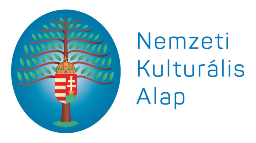Bánffy Castle Bonțida
Short history and presentation of Bánffy Castle, Bontida
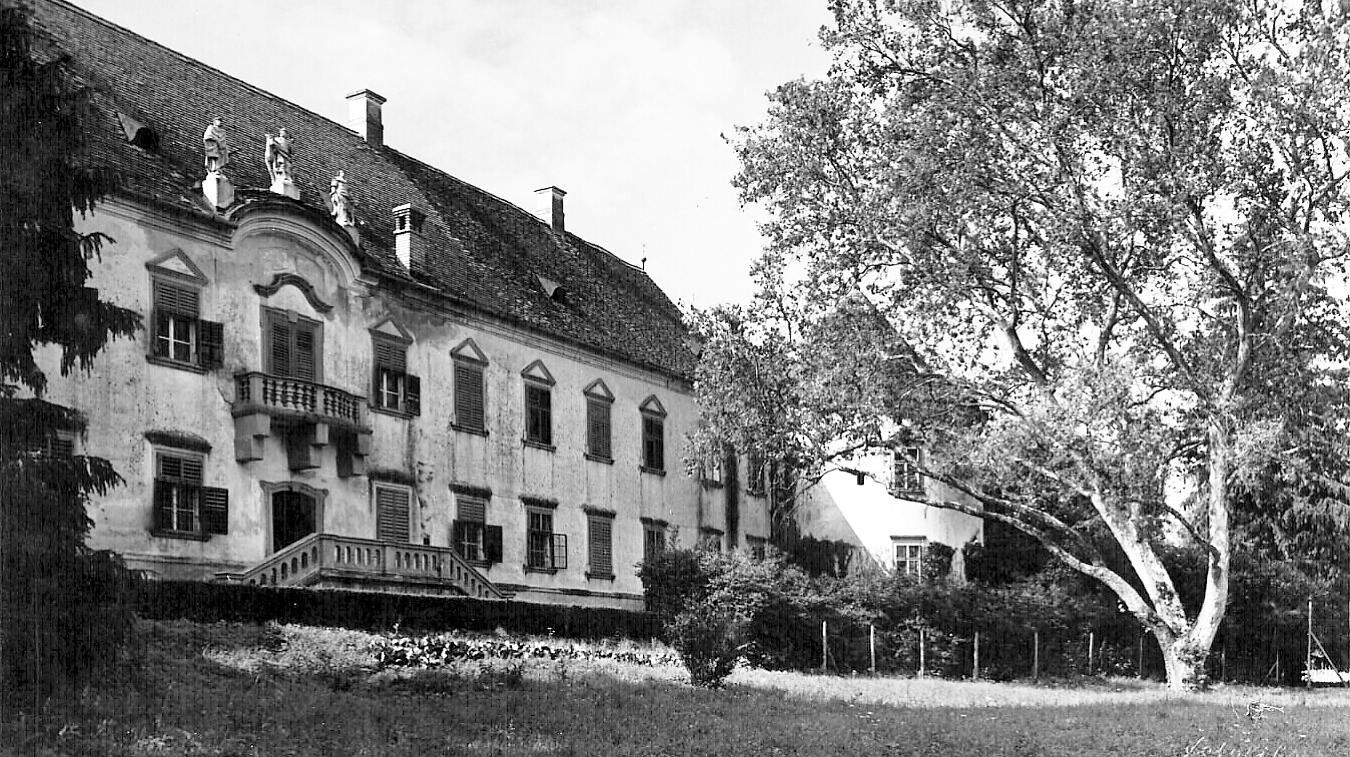
After leaving the Cluj-N.- Dej highway at Răscruci, one can soon observe the rising towers of the Bánffy Castle at Bontida, on the banks of the Somes River. Formerly known as the Transylvanian Versailles, Bánffy castle, Bontida is one of the most beautiful historic buildings in the Carpathian basin.
Although it is probable that a mansion stood on the estate in the 14th and 15th Centuries, written evidence has been found dating only from the beginning of the 16th Century. According to a military report from 1680, fortifications had been built around the mansion, comprising of squared Renaissance ramparts with cylindrical corner towers. Dénes Bánffy (1638-1674), Lord Lieutenant of the counties of Dăbâca and Cluj, brother-in-law of Prince Mihaly Apafi, had the potential and the power to create such a large and imposing Renaissance castle.
Count Dénes Bánffy(II) inherited the estate in 1735 at the age of 12. He spent his youth in Vienna and returned home as Master of the Horse to Maria Theresa. He began the Baroque reconstruction of the castle in 1747.
The first stage of Dénes Bánffy’s reconstruction addressed the court d’honneur. This was built between 1745 and 1751 on the area in front of the gatehouse. The new buildings containing a riding hall, stables, coach house and dwelling houses for servants were based on the style of the works related to the Viennese experience of the owner.
József Bánffy, ordered the demolition of the gatehouse of the Renaissance castle around 1820, and combined the Baroque and Renaissance courtyards. Stones of the gatehouse were used to build the mill beside the castle.
The park was also transformed. József Bánffy converted the geometrical French garden, inherited from the previous century, into a Romantic landscape-garden with all the appropriate features…
The Castle was unfortunately seriously damaged by the retreating German troops, destroying its furniture, library, and portrait collection in September 1944. The only evidence of its former interiors are the archive photographs.
The consequences of the nationalisation and the inadequate use of the buildings, as well as the lack of maintenance accelerated their degradation.
In the 1960’s the National Direction for Monument Conservation consolidated the main building. The funding of the restoration works was stopped after a short time.
It’s precarious condition has been officially recognised as it appears on the World Monuments Watch’s list of One Hundred Most Endangered Sites for 2000.
The size, architectural and historic value, and degree of degradation of the castle make its restoration and use a complex task, which will only succeed with a proper long-term strategy and international co-operation.
The Romanian-Hungarian Covenant between the Ministry of Culture, Romania and the Ministry for National Cultural Heritage, Hungary signed in 1999 enabled funds to be directed towards the conservation of the castle.
Through the presence of the Transylvania Trust and the Institute of Historic Building Conservation, who are the organisers of the Built Heritage Conservation Training Centre set up within the Castle, the high quality restoration and long term protection can be ensured.
In the longer term the ensemble will incorporate commercial units as well, such as restaurant, gift shop, café, hotel, and will also include conference facilities. A commercial activity already exists on the site in the form of the Art Café located in the ground floor of the Bastion attached to the former Kitchen Block, open daily from 10 am to 6 pm. It is hoped that in the longer term such commercial activity can be extended into the Main Building through its conversion to hotel and conference facilities so that eventually the commercial activity and Training Centre can operate in parallel to create a sustainable site.
The Parkland
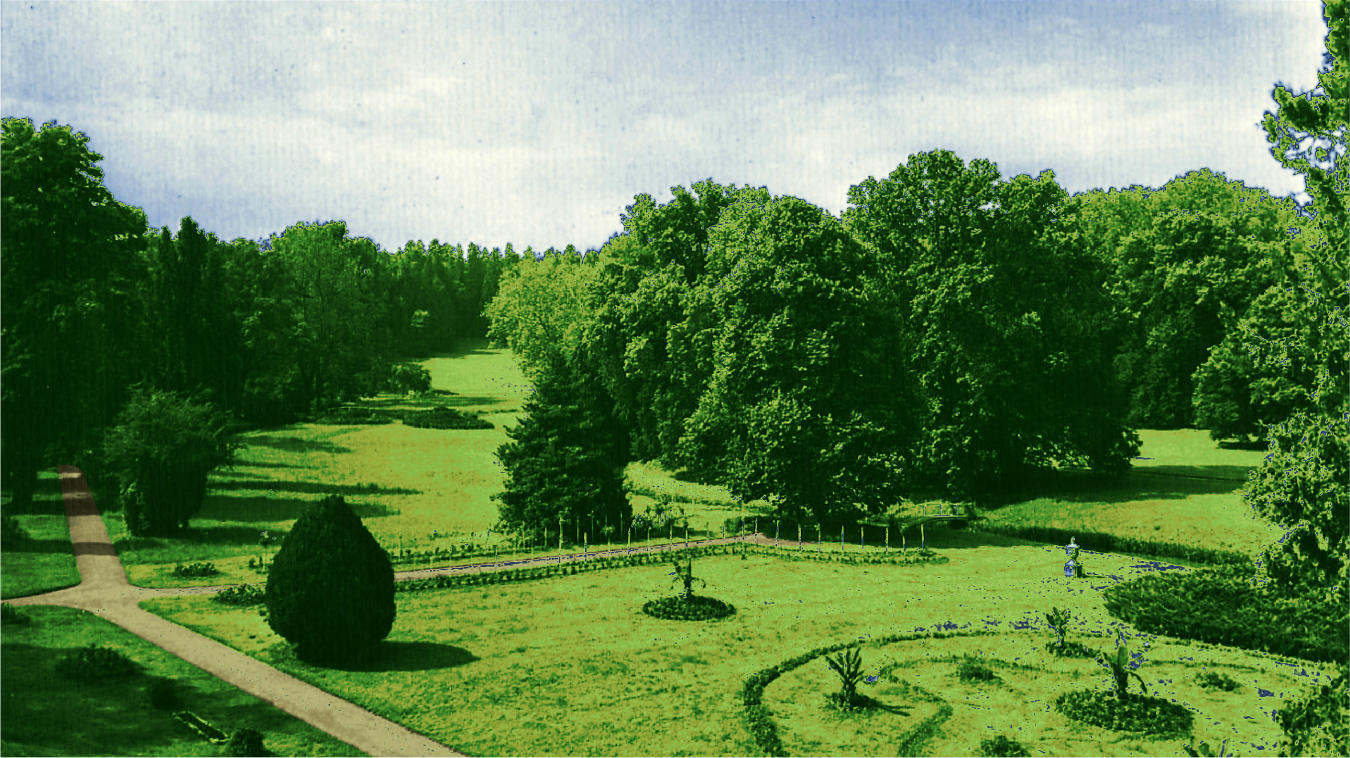
Until 1944, Transylvania’s most famous parkland enveloped Bánffy Castle.
The earliest documentation relating to the gardens and parkland of the castle date from the eighteenth century when Dénes Bánffy attempted to bring the grandeur of the French garden to Bontida, using Versailles and Schönbrunn as models. Johann Christian Erras reflected the French Baroque concept of estate parkland in his landscape designs for Bánffy Castle.
The formal layouts complimented the fashionable Baroque architecture of this period. Symmetrical avenues, large parterres, clipped trees and shrubs dominated the gardens. Three linden tree avenues, each 1000 meters in length, radiated from the western wall of the castle. These avenues converged at the bridge and a fourth avenue departed northwards.
The park was transformed at the beginning of the nineteenth Century, under the instruction of Count József Bánffy. These works were undertaken in parallel with the major alterations that were being executed at the castle. The geometrical French inspired parkland, was remodelled into the fashionable Romantic style, first by Sámuel Hermann and then again in 1831 by János László.
Originating in England, this romantic style was a reaction to the formal layouts of the French designs. The straight roads and geometric forms were replaced with artificial groves and meandering paths that enabled trees and plants to grow without constraints.
The beauty of the parkland can not be discerned today, the remains are steadily eroding by the establishment of self-seeding plants, the felling /cutting of trees and lack of maintenance. It is hoped that through partnership and international cooperation the parkland will be eventually fully restored, to complement the restoration work being undertaken at the castle.
This will provide a new environment to be enjoyed by local people and visitors, and will restore the setting of the castle.
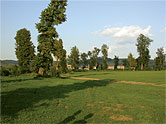
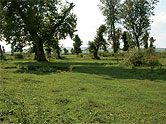
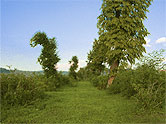
The Statue Gallery
The statue gallery of the Bonţida castle was the most important 18th century Transylvanian ensemble of statues. It was created in the 1740-50’s, when Dénes Bánffy extended his castle to resemble the Vienna aristocratic buildings, and wanted to decorate it according to his rank. The creation of the gallery, a compulsory element of nobiliar representation in the period, was entrusted to the Cluj sculptor Johannes Nachtigall.
The figures (heroes, gods, titans) with high artistic value were drawn from ancient Greek and Roman mythology and the Metamorhposes of the Roman poet Ovidius.
Three mythological figures were placed on the southern as well as the northern gables of the baroque main building. On the southern façade a huge blazon composition with a griffin was also created. The U-shaped block enclosing the court d’honneur encompasses the main gate of the ensemble as well. The 3 titan statutes on its side facing the village were completed by an embossed family coat of arms held by griffins. On the internal elevation of the gatehouse there stood 7 mythological figures, the middle 3 of them being titans. The statues that decorated the northern and southern wings of the U-shaped barns (4 on each) faced the court d’honneur. The parapets of the stable and riding hall were each decorated by 11 figures of ancient heroes and gods. The elevations facing the village of the riding hall and gatehouse were decorated by 20 richly carved stone urns, sometimes with figurative ornaments. Originally there were 36 of these, but the urns of the stable disappeared prior to 1944.
The gallery of the parapet was completed by representative gates with a statue of a groomsman on a prancing horse at the riding hall, and an embossed horse-figure at the stable. The stable’s drinking fountain was given artistic value by a life-sized statue of a horse blowing water through his nostrils. The park was also decorated by urns and statues.
The gallery of more then 80 pieces became the victim of neglect in the past fifty years. Most of the surviving statues are at Cluj. The broken pieces lying on the ground were taken to the stone deposit of the Transylvanian Museum of History (8 statues and 4 urns) and to the court of the Inheritance Department (13 statues and 4 urns) in 1978. At Bonţida there are 2 statues (Cadmos and Helios) in their original location, on the stable’s parapet, and 5 statues from the main building and fragments of 2 urns in the museum created in the gatehouse, with the torso of the stable’s fountain statue in it its front. It is hoped that in the longer term many of the statues will be returned to the Castle, as the museum develops.






The history of Bánffy Castle from Bonţida
The Bánffy Castle, Bonţida had been added to and altered since the 16th century, and was finally completed in the 19th century. The most outstanding construction periods were the Renaissance and Baroque ones. It was unfortunately seriously damaged by the retreating German troops, destroying its furniture, library, and portrait collection in September 1944.
The only evidence of its former interiors are the archive photographs. The consequences of the nationalization and the inadequate use of the buildings, as well as the lack of maintenance accelerated their degradation.
In the 60’s the National Direction for Monument Conservation consolidated the main building. The funding of the restoration works was stopped after a short time and the castle became a source for construction materials and firewood.
Conservation and restoration of the castle requires major investments. This is valid only if it can achieve a well-defined function to ensure its future viability. The Transylvania Trust will develop an International Built Heritage Conservation Training Centre at the castle, which will ensure the effective management of the buildings and the surrounding site.
The Romanian-Hungarian Covenant between the Ministry of Culture, Romania and the Ministry for National Cultural Heritage, Hungary signed in 1999 enabled funds to be directed towards the conservation of the castle. The Romanian Ministry of Culture has also directly funded the reinstatement of a major part of the roof to the main building.
Since then additional funding has been sourced through private foundations, which has enabled restoration to be undertaken within the context of the Built Heritage Conservation Training Courses run jointly by the Transylvania Trust and the Institute of Historic Building Conservation (IHBC).
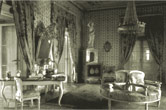
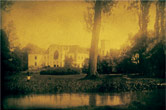
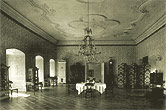
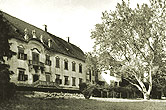
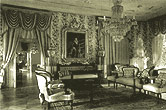
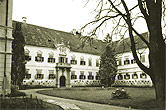
Regeneration Through Conservation
Built heritage is more than just old houses, castles, churches, museums – it is “living” evidence of our past, culture, craftsmanship, history, lifestyle, etc. This heritage was left to us as a legacy by our ancestors, to at least maintain, and to hand over to the next generations.
Historic buildings need care and attention, but they offer benefits in return – they add value to our life in so many ways.
They contribute to a “human” environment, a space to live, work, relax in – to enjoy. Through tourism, trade, cultural activities they bring regeneration to a region, by creating new workplaces, and a market for local products and services.
The continued development of the BHCT Centre at Bánffy Castle offers an opportunity for the revitalisation of the local economy. The project offers employment for local people, and by purchasing goods and materials locally (from bricks to vegetables), it helps to stimulate local enterprise.
International interest in the castle and the work of the project continues to bring many visitors through the development of cultural tourism.
In the longer term the project will develop a partnership with commercial enterprise, which will see the development of hotel and conference facilities, and a restaurant in parallel with the BHCT Centre, workshops and museum. This process has already begun with the opening of the castle’s Art Café in November 2001.
The support of the local community through individuals, and particularly through the Local Council of Bontida, has been instrumental in developing and managing this change.
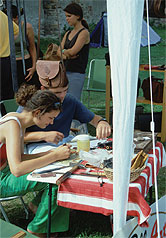
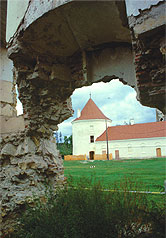
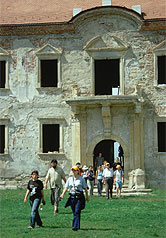
How to get there
The Castle is located in the village of Bontida, 30 km north of Cluj, just off the national road connecting Cluj with Bistrita/Baia Mare.
Guided tours
Guided tours and presentation of the work at the Castle is available for groups.
Rent Possibilities
Conference facilities
A spacious conference room and also additional meeting rooms, kitchen and dining facilities, accommodation facilities including a nuptial apartment, a cultural café.
Each of these facilities is available for:
Weddings
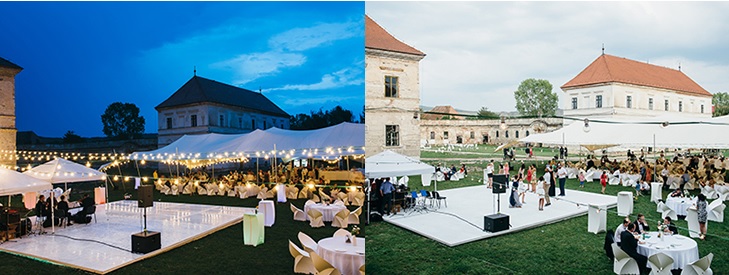
You have been dreaming about this day for a very long time. Or it just snuck up on you. Either way, enjoy your dream wedding in one of the most spectacular castles in Transylvania. And him too, but mostly you. The “I do‘s” can be said either outside (marquise) or indoors. We offer a private appartment for the bride and groom, accommodation for the guests.
Details at: http://weddingatbanffycastle.ro/
Corporate Events
If your organization holds annual banquets designed to improve worker performance, or you want to host leadership and sales seminars or maybe you want to celebrate the employee and team achievements by throwing a party. Either way, we are welcoming you to Bánffy Castle, a place with an historic value formerly known as the Transylvanian Versailles. We can arrange the catering.
Start planning your event by contacting us at: bhct@transylvaniatrust.ro
Milestone Events
From your 40th birthday to your son’s high school graduation or baptism, reaching a milestone doesn’t happen every day. Each family event is an occasion to celebrate. Begin by choosing an outstanding location – Bánffy Castle – an architectonic Baroque monument that has been a witness of the Transylvanian history.
Start planning your celebration by contacting us at bhct@transylvaniatrust.ro
Cultural Events
The historic environment of the Bánffy Castleoffers a perfect setting for the enjoyment of cultural activities. We would be honored to host your concerts, exhibitions, book or musical albums presentations.
Start planning your event by contacting us at bhct@transylvaniatrust.ro
Educational Activities
Planning a history lesson takes more than a map and a blackboard. Successful lesson planning can be productive as well as fun if you take advantage of the historic environment at Banffy Castle to familiarize the students with the importance and significance of the past and help them understand and enjoy the quality of historic buildings and landscapes. Bánffy castle is one of the most spectacular ensembles in Transylvania and is therefore a great location for educational activities such as: art lessons, history, mathematics, geography, etc.
Start planning your lesson by contacting us at bhct@transylvaniatrust.ro
Supported by His Royal Highness, The Prince of Wales
Sponsors:


